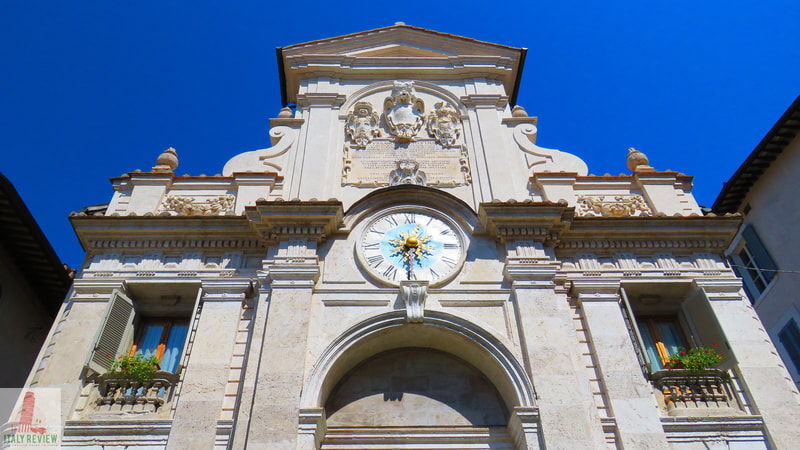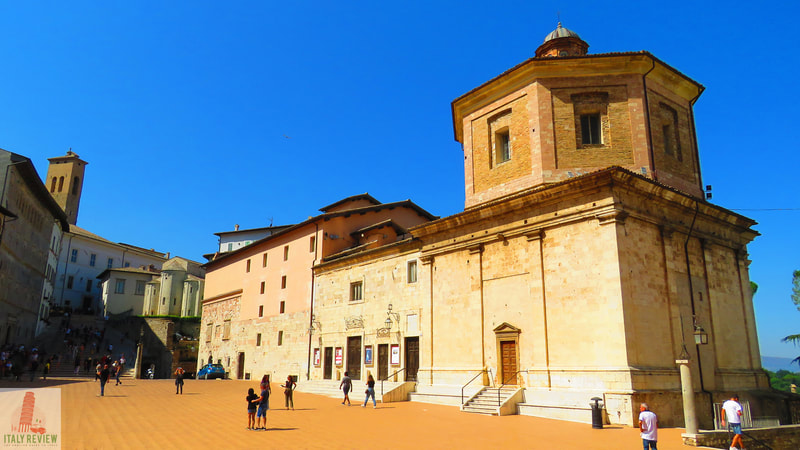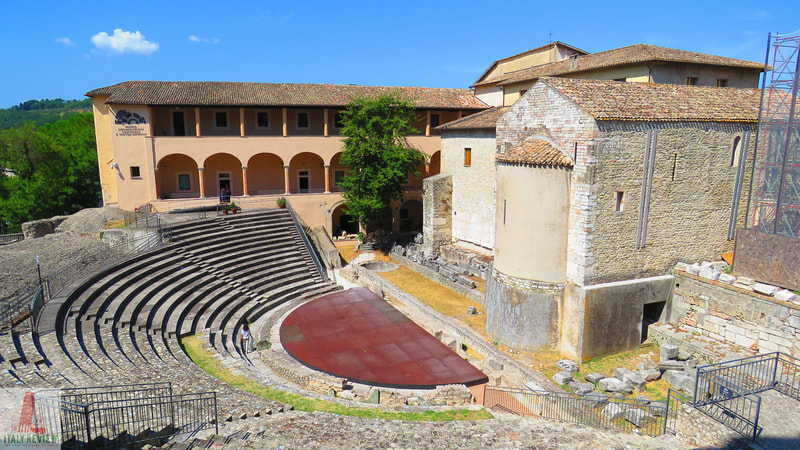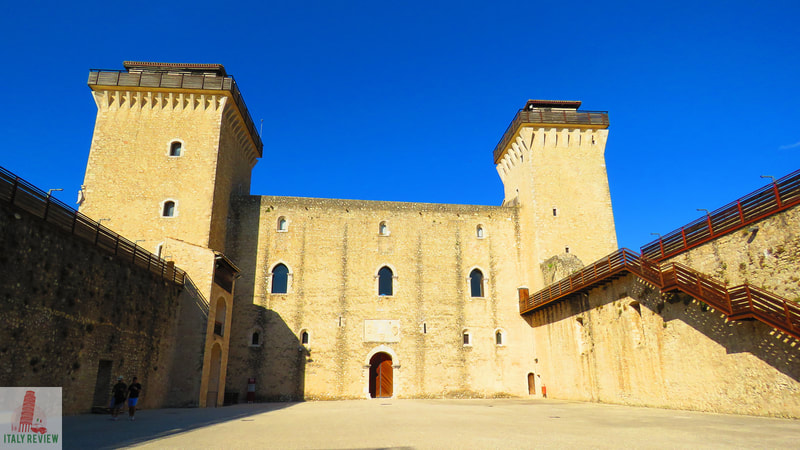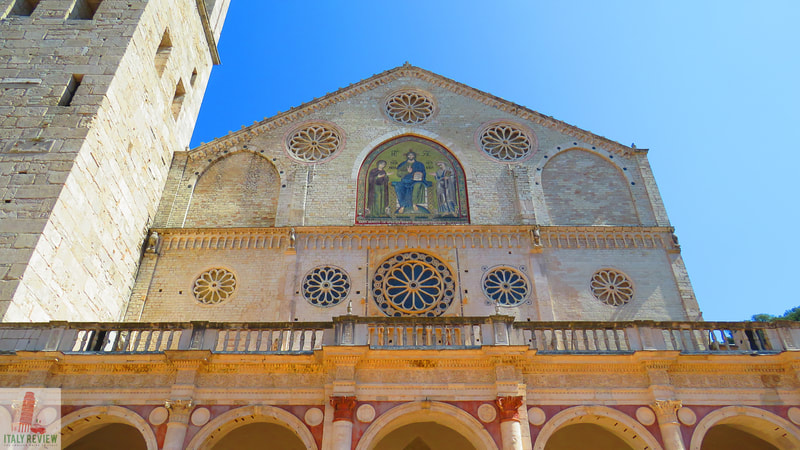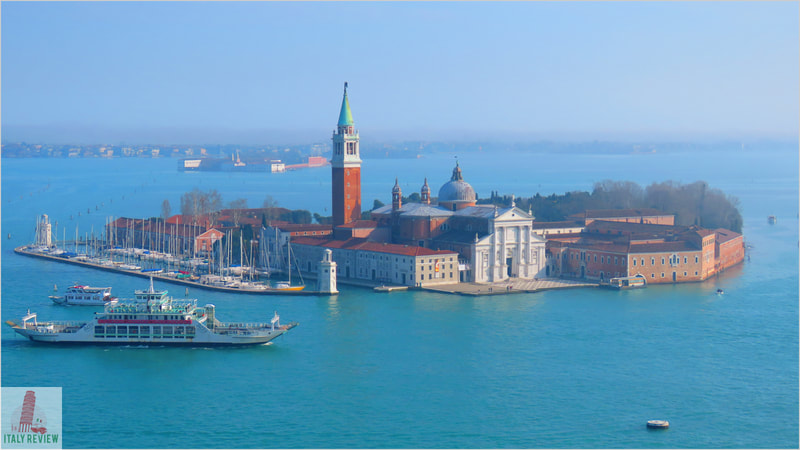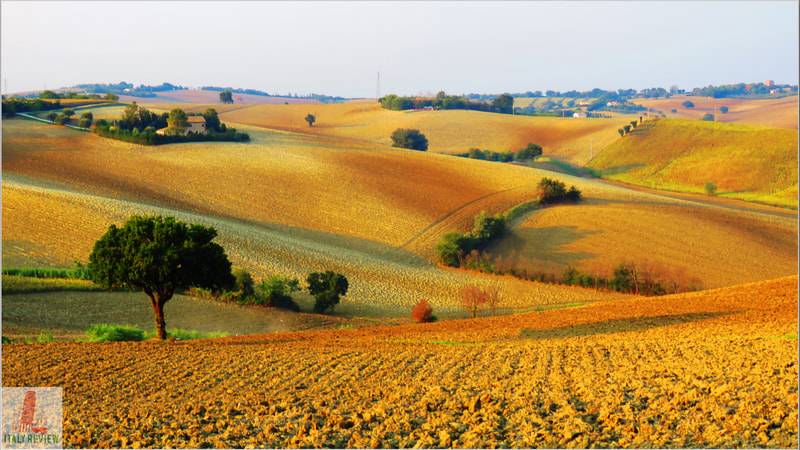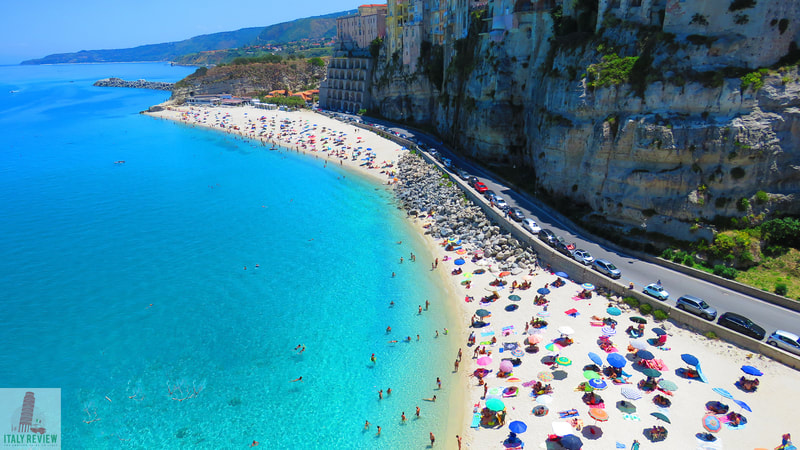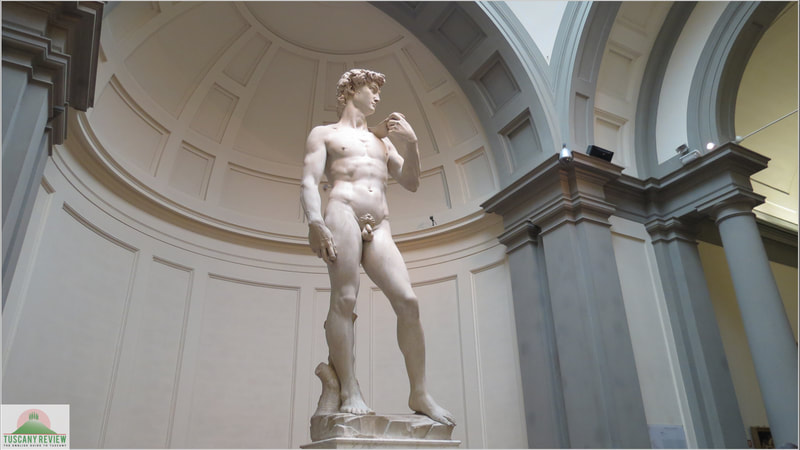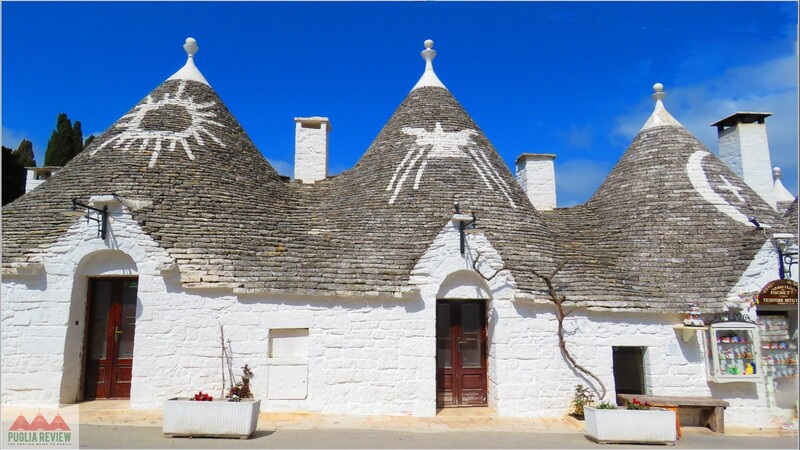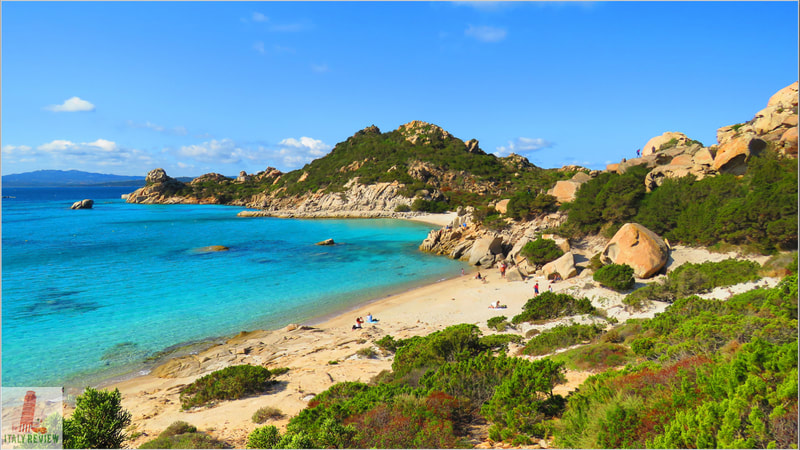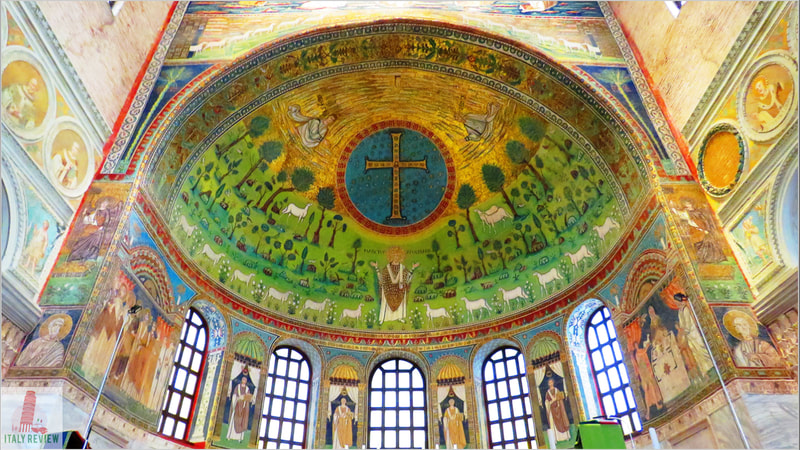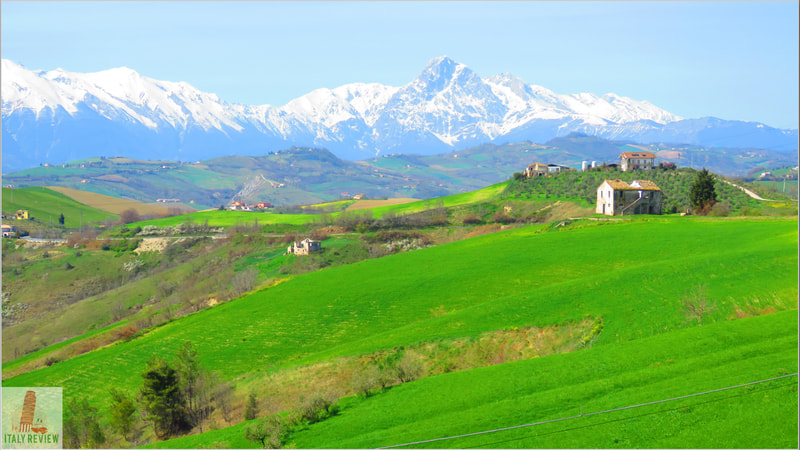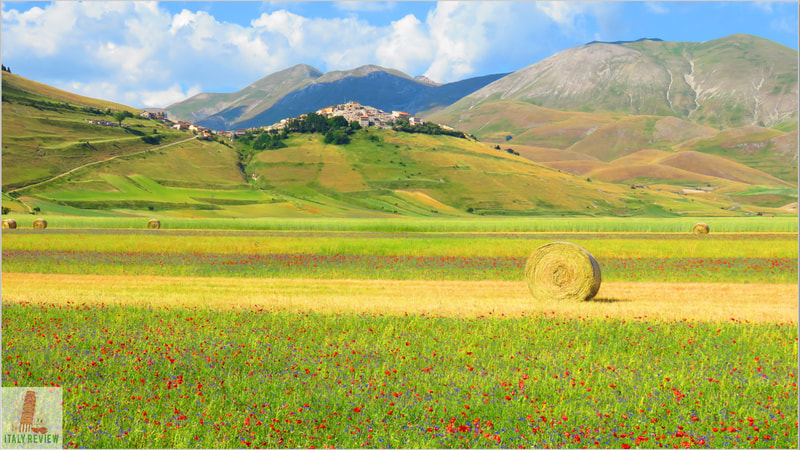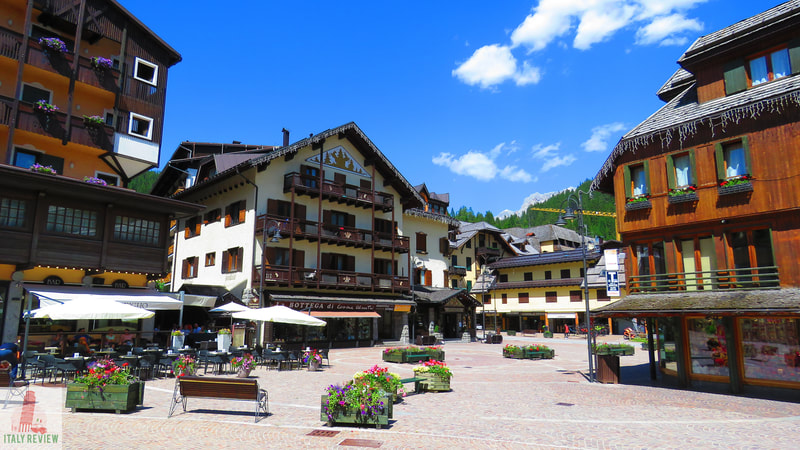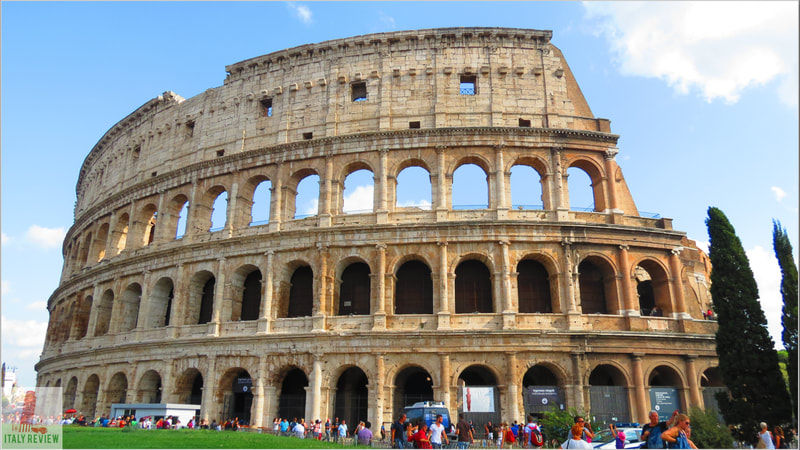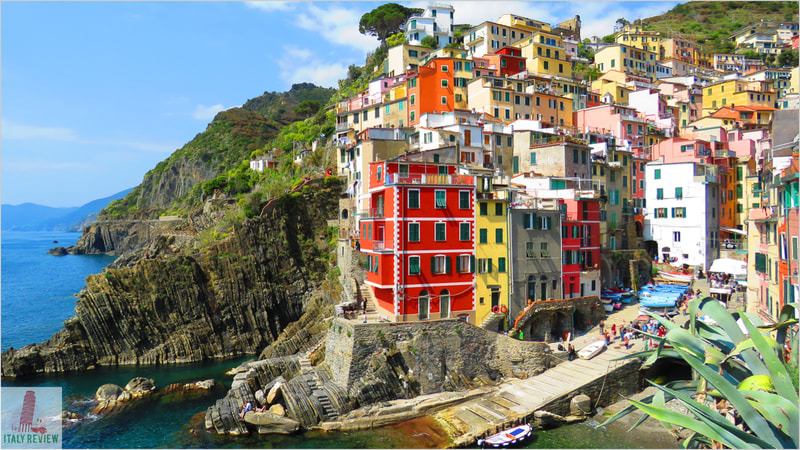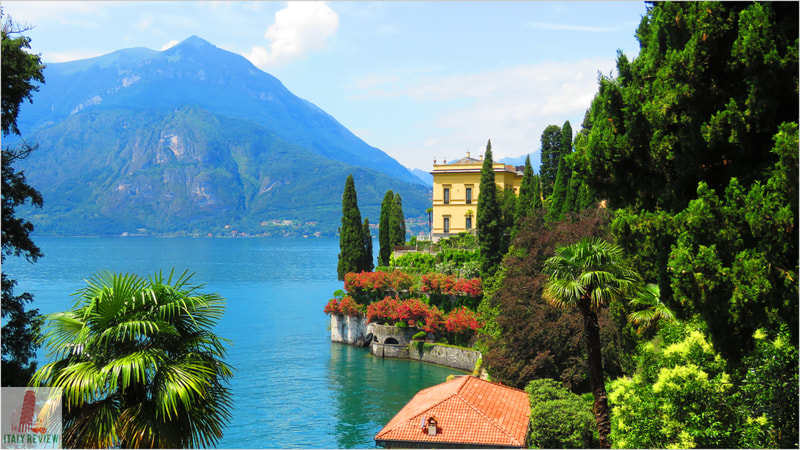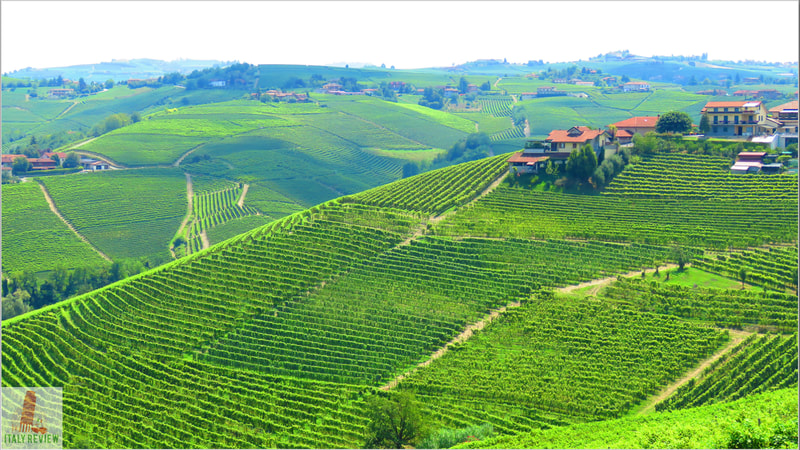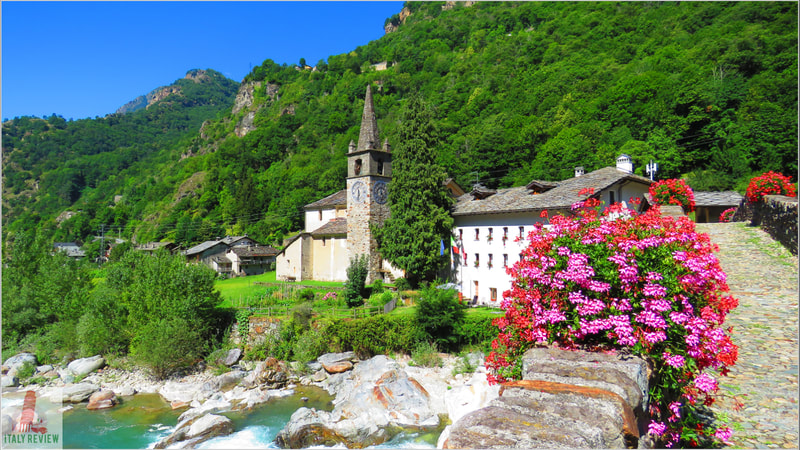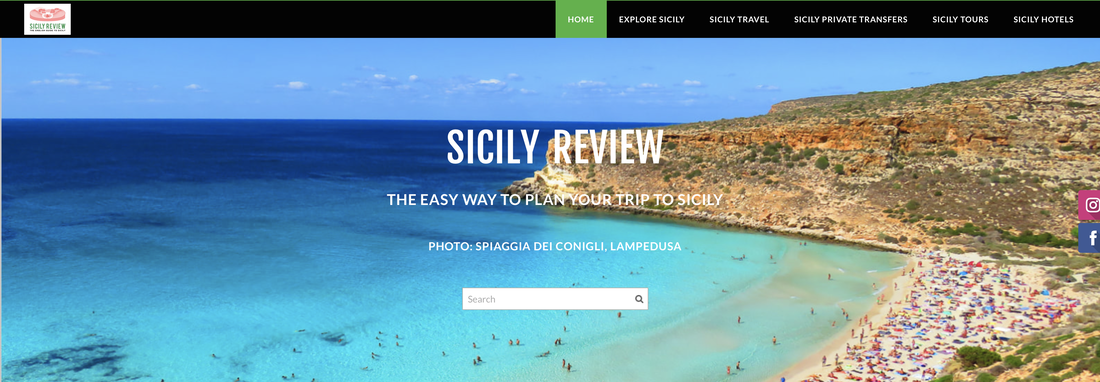Spoleto
|
By Dion Protani
|
Latest update: 30 December 2023
|
|
The city of Spoleto is one of the most fascinating locations in Umbria. Situated 63 kilometres south-east of Perugia, it offers a mix of architectural styles and sights from diverse historical eras.
Sitting in a dominant position overlooking the city is the Rocca Albornoziana, a medieval fortress from which you can get the best views over the town. From this vantage point it's possible to pick out the main cluster of sights which are congregated around Piazza del Duomo and include Spoleto Cathedral whose bell tower rises majestically over the beautiful square with its elegant staircase. |
Related links
History of Spoleto
Originally founded by the Romans in 241 BC as Spoletum, Spoleto's past includes an era when it was the powerful Duchy of Spoleto, dating back to 570 when it was annexed by the Lombards and then two hundred years later by Charlemagne and eventually the Franks.
By the 11th century the Duchy of Spoleto encompassed a huge swathe of territory from the Adriatic Coast to its east, the Romagna to the north, the Papal States including Rome to the west and the principalities of Capua and Benevento to the south.
The city was sacked in 1155 by Holy Roman Emperor Frederick I Barbarossa and the Duchy of Spoleto expired in 1213 when it was brought under control by the Papal States.
Originally founded by the Romans in 241 BC as Spoletum, Spoleto's past includes an era when it was the powerful Duchy of Spoleto, dating back to 570 when it was annexed by the Lombards and then two hundred years later by Charlemagne and eventually the Franks.
By the 11th century the Duchy of Spoleto encompassed a huge swathe of territory from the Adriatic Coast to its east, the Romagna to the north, the Papal States including Rome to the west and the principalities of Capua and Benevento to the south.
The city was sacked in 1155 by Holy Roman Emperor Frederick I Barbarossa and the Duchy of Spoleto expired in 1213 when it was brought under control by the Papal States.
Spoleto's System of Escalators
Access around the city comes partially via an unusual system of escalators which first transport you up from the car parks at the foot of town, and eventually lead right up to the castle. The escalator system is quite complex with a map required to show you to the most popular locations, but it's a very handy way of getting around this hilly city.
Access around the city comes partially via an unusual system of escalators which first transport you up from the car parks at the foot of town, and eventually lead right up to the castle. The escalator system is quite complex with a map required to show you to the most popular locations, but it's a very handy way of getting around this hilly city.
Sightseeing Spoleto: where to start
A sensible starting point for an itinerary of Spoleto is Piazza della Libertà at the southern end of the centro storico. The main area of the historic centre is in this, the upper area of town which rises to a peak at the Rocca Albornoziana.
Piazza della Libertà provides a fairly modest introduction to Spoleto; it's the first part of the historic centre you reach if you've used one of the car parks at the southern end of town and then taken the escalator complex towards the centre. Although it's the home to the Spoleto tourist office, the main attraction of Piazza della Libertà is what you can see just below it.
A sensible starting point for an itinerary of Spoleto is Piazza della Libertà at the southern end of the centro storico. The main area of the historic centre is in this, the upper area of town which rises to a peak at the Rocca Albornoziana.
Piazza della Libertà provides a fairly modest introduction to Spoleto; it's the first part of the historic centre you reach if you've used one of the car parks at the southern end of town and then taken the escalator complex towards the centre. Although it's the home to the Spoleto tourist office, the main attraction of Piazza della Libertà is what you can see just below it.
Roman Theatre of Spoleto
At the south-western corner of the Piazza you can see the 1st century BC Roman Theatre which wasn't fully-excavated until the late 19th century. For full exploration of the Roman Theatre you need to enter the Museo Archeologico Nazionale which is accessed via a tunnel towards the north-western corner of the square.
The Roman Theatre was the stage for one of the most dramatic and horrific events in the history of Umbria, in 1319 at the time of the War of the Guelphs and Ghibellines. The war was fought over two factions: the Guelphs who supported the Pope, opposing the Ghibellines who were on the side of the Holy Roman Empire. By that time, Spoleto was on the side of the Ghibelline faction and executed 400 Guelph supporters on the steps of the Roman Theatre, slitting their throats before heaping their corpses in a pile and burning them.
At the south-western corner of the Piazza you can see the 1st century BC Roman Theatre which wasn't fully-excavated until the late 19th century. For full exploration of the Roman Theatre you need to enter the Museo Archeologico Nazionale which is accessed via a tunnel towards the north-western corner of the square.
The Roman Theatre was the stage for one of the most dramatic and horrific events in the history of Umbria, in 1319 at the time of the War of the Guelphs and Ghibellines. The war was fought over two factions: the Guelphs who supported the Pope, opposing the Ghibellines who were on the side of the Holy Roman Empire. By that time, Spoleto was on the side of the Ghibelline faction and executed 400 Guelph supporters on the steps of the Roman Theatre, slitting their throats before heaping their corpses in a pile and burning them.
Piazza Pinciani
To the side of the archway that leads down to the Archaeological Museum, the main thoroughfare of Corso Mazzini continues north to the large 17th century church: the Chiesa di San Filippo Neri. At this point, there's a turning on to Piazza Pinciani where an ornamental staircase called the Scalinata di Piazza Pinciani leads up to Via di Fontesecca which in turn leads on to the Via Saffi escalator station. Just before the escalator station, a right hand turn leads on to one of the most important squares in the city.
To the side of the archway that leads down to the Archaeological Museum, the main thoroughfare of Corso Mazzini continues north to the large 17th century church: the Chiesa di San Filippo Neri. At this point, there's a turning on to Piazza Pinciani where an ornamental staircase called the Scalinata di Piazza Pinciani leads up to Via di Fontesecca which in turn leads on to the Via Saffi escalator station. Just before the escalator station, a right hand turn leads on to one of the most important squares in the city.
Around Piazza del Mercato
Piazza del Mercato is the scene of Spoleto's morning market (08:30 - 13:00) and a bustling area where you can buy whatever's on sale at the market that day or stop for a bite to eat or drink at one of the lively establishments that edge the colourful little square. The northern edge of the Piazza is dominated by a monumental fountain with a clock above it: the Fontana di Piazza del Mercato.
Piazza del Mercato is the scene of Spoleto's morning market (08:30 - 13:00) and a bustling area where you can buy whatever's on sale at the market that day or stop for a bite to eat or drink at one of the lively establishments that edge the colourful little square. The northern edge of the Piazza is dominated by a monumental fountain with a clock above it: the Fontana di Piazza del Mercato.
Piazza del Duomo: Spoleto Cathedral and the Basilica di Sant'Eufemia
It's just a short walk from Piazza del Mercato down to the centrepiece area of Spoleto, the Piazza del Duomo. From Via Aurelio Saffi a staircase leads down to Piazza del Duomo but try not to miss the Basilica di Sant'Eufemia situated close to the top.
The twelfth century edifice is a complex including the main church, a monastery and the Museo d'Arte Diocesano gallery among whose exhibits are works by Filippino Lippi. From the Sant'Eufemia complex the staircase continues its graceful descent towards the Cattedrale di Santa Maria Assunta, the cathedral which dates back to the twelfth century. Piazza del Duomo is dominated by the cathedral's Romanesque facade and the imposing campanile standing proudly next to it.
It's just a short walk from Piazza del Mercato down to the centrepiece area of Spoleto, the Piazza del Duomo. From Via Aurelio Saffi a staircase leads down to Piazza del Duomo but try not to miss the Basilica di Sant'Eufemia situated close to the top.
The twelfth century edifice is a complex including the main church, a monastery and the Museo d'Arte Diocesano gallery among whose exhibits are works by Filippino Lippi. From the Sant'Eufemia complex the staircase continues its graceful descent towards the Cattedrale di Santa Maria Assunta, the cathedral which dates back to the twelfth century. Piazza del Duomo is dominated by the cathedral's Romanesque facade and the imposing campanile standing proudly next to it.
Rocca Albornoziana
While Piazza del Duomo may be the centrepiece of Spoleto, the city's crowning glory is the Rocca Albornoziana which stands imperiously looking down on everything else. The fortress takes its name from the same Cardinal Albornoz who commissioned the similarly-named castle in the hill town of Orvieto, further to the west of Spoleto.
Originally serving both to protect the city but also to house local dignitaries, the Rocca Albornoziana later became a prison and was still being used as such until 1982. Its current function is that of a museum and gallery; apart from the exhibits on display it's one of the best places from which to look down on to the city or to pick out sights such as the Ponte delle Torri, a 14th century archway bridge which spans the Tessino Gorge some 80 metres below.
While Piazza del Duomo may be the centrepiece of Spoleto, the city's crowning glory is the Rocca Albornoziana which stands imperiously looking down on everything else. The fortress takes its name from the same Cardinal Albornoz who commissioned the similarly-named castle in the hill town of Orvieto, further to the west of Spoleto.
Originally serving both to protect the city but also to house local dignitaries, the Rocca Albornoziana later became a prison and was still being used as such until 1982. Its current function is that of a museum and gallery; apart from the exhibits on display it's one of the best places from which to look down on to the city or to pick out sights such as the Ponte delle Torri, a 14th century archway bridge which spans the Tessino Gorge some 80 metres below.
Spoleto's Lower Town to the north of Piazza del Duomo
Spoleto also appears in UNESCO's World Heritage List under the heading: Longobards in Italy. Places of the Power (568-774 A.D.), a series of seven building groups including Spoleto's Basilica di San Salvatore which lies at the foot of the city.
To the north of the Cathedral is Spoleto's lower town around Piazza Garibaldi. This is generally-speaking the newer area of the city which does't quite enjoy the array of sights as the upper town, but that said, this is the site of a Roman Amphitheatre (not to be confused with the Roman Theatre described above). From Piazza Garibaldi it's a 7 minute walk (500 metres) to the UNESCO-listed Basilica di San Salvatore which dates back to the 4th or 5th century AD, one of the oldest churches in Italy.
Spoleto also appears in UNESCO's World Heritage List under the heading: Longobards in Italy. Places of the Power (568-774 A.D.), a series of seven building groups including Spoleto's Basilica di San Salvatore which lies at the foot of the city.
To the north of the Cathedral is Spoleto's lower town around Piazza Garibaldi. This is generally-speaking the newer area of the city which does't quite enjoy the array of sights as the upper town, but that said, this is the site of a Roman Amphitheatre (not to be confused with the Roman Theatre described above). From Piazza Garibaldi it's a 7 minute walk (500 metres) to the UNESCO-listed Basilica di San Salvatore which dates back to the 4th or 5th century AD, one of the oldest churches in Italy.
Spoleto Travel
It's within this lower area of town that Spoleto's train station is situated; albeit a 13 minute walk from Piazza Garibaldi (1 km). Trains run north from Spoleto to Perugia with a journey time of an hour, with stops along the way at the pretty hill town of Spello (24 minutes) and one of Umbria's foremost attractions: Assisi (33 minutes).
Southbound trains reach Rome in just under an hour and a half, stopping at another of Umbria's major towns, Terni (27 minutes) and the hill town of Orte in Lazio (53 minutes) first.
It's within this lower area of town that Spoleto's train station is situated; albeit a 13 minute walk from Piazza Garibaldi (1 km). Trains run north from Spoleto to Perugia with a journey time of an hour, with stops along the way at the pretty hill town of Spello (24 minutes) and one of Umbria's foremost attractions: Assisi (33 minutes).
Southbound trains reach Rome in just under an hour and a half, stopping at another of Umbria's major towns, Terni (27 minutes) and the hill town of Orte in Lazio (53 minutes) first.
Close to Spoleto
With a car there are endless possibilities for places to see close to Spoleto: just off the main road heading north towards Perugia is the hill town of Trevi, while north-east of Trevi is the pretty village of Rasiglia up in the Umbrian hills. Directly east of Spoleto and towards the Monti Sibillini National Park is the town of Cascia with its colourful and unusually-modern Basilica di Santa Rita da Cascia, while that same eastbound trajectory which eventually bring you to the Piano Grande and the polychromatic spectacular on display at Castelluccio.
With a car there are endless possibilities for places to see close to Spoleto: just off the main road heading north towards Perugia is the hill town of Trevi, while north-east of Trevi is the pretty village of Rasiglia up in the Umbrian hills. Directly east of Spoleto and towards the Monti Sibillini National Park is the town of Cascia with its colourful and unusually-modern Basilica di Santa Rita da Cascia, while that same eastbound trajectory which eventually bring you to the Piano Grande and the polychromatic spectacular on display at Castelluccio.
Comune di Spoleto
|
Province: Perugia
Region: Umbria Population: 36,467 (source: ISTAT 1 January 2023) Total size: 349 km² Elevation: 396 metres Highlights: Rocca Albornoziana, Roman Theatre, Cathedral Close by: Vallo di Nera, Campello sul Clitunno, Trevi, Acquasparta Recommended accommodation: Hotel dei Duchi |
UNESCO World Heritage Site
Longobards in Italy: Places of the Power (568-774 A.D.)
Site: The Basilica of San Salvatore
Year: 2011
Longobards in Italy: Places of the Power (568-774 A.D.)
Site: The Basilica of San Salvatore
Year: 2011


